Diving - The adventure continues!
2023 Diving - The Salsette and other UK diving
Fellow club member Andy has returned to diving in the last couple of years after a long break.
He'd qualified as a teenager as an Advanced Diver, but then life had intruded and he'd only done odd dives over the years, but then decided to return to it, and with a vengeance!
In 2022, he'd done over 100 dives and qualified as a Solo Diver.
In 2023, he decided he wanted to reach the maximum depth he was qualified for, 50 Metres.
To that end, he undertook the BSAC Accelerated Decompression Procedures (ADP) course, which allowed him to reduce his decompression time by breathing a highly oxygen rich Nitrox mix on decompression stops.
I had done this course some years before and completed a few dives using the method, but I had never managed to dive the Salsette, a P&O liner sunk in 1917 (by UB40, no, not the Brummie reggae band, an infamous U-Boat that wrecked havoc for a while) and so suggested we go and do this to put his new qualification to the test.
Most reports state the Salsette lies at 45M, but Andy had been told there was the possibility of reaching 50M at a stretch, so we planned our dive with that in mind.
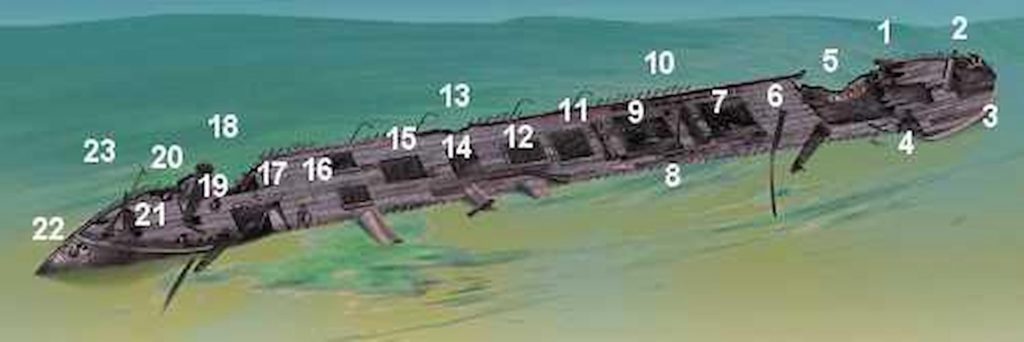
The Salsette Wreck tour - see https://divernet.com/world-dives/wreck-tour-11-the-salsette/
The big problem with enriched air is that it is toxic under pressure. As we were using the richest we were permitted, 80% Oxygen, we could not safely breath this gas below 10M.
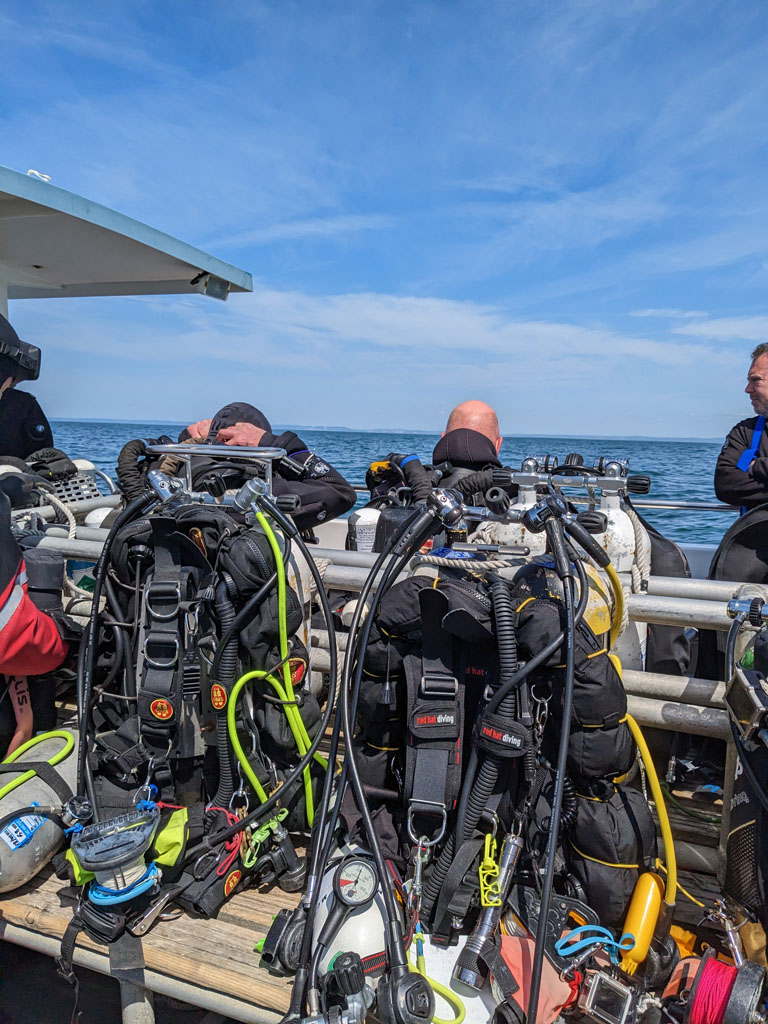
Heading out, lots of expensive dive gear on board.
This meant we planned to do a couple of stops on Air (our bottom gas - Many use Trimix, which is Nitrogen, Helium and Oxygen, but it's a horribly expensive gas for open circuit, and anyway neither of us as qualified to use it) and then switch to the 80% for the last couple of, longer, stops at 9M and 6M.
We both carried slates, covering various eventualities including staying longer or going deeper than our planned 45M/20 minutes or not being able to use the 80% to decompress, but we hoped that our computers would work and reward us with shorter deco times to take into account the actual profile of the dive.
We drove down separately and met at Portland Marina, to join Skin Deep, the boat we were diving from that day.
The weather was perfect, with almost flat seas on site and clear blue skies.
The wreck stands an impressive distance of the sea floor, with most of the hull still intact, although most of the superstructure has vanished over the 100+ years it has lain there. From stem to stern, the wreck is 134M, so it's a big wreck to really explore, so our aim was really just to get a feel for it on this visit.
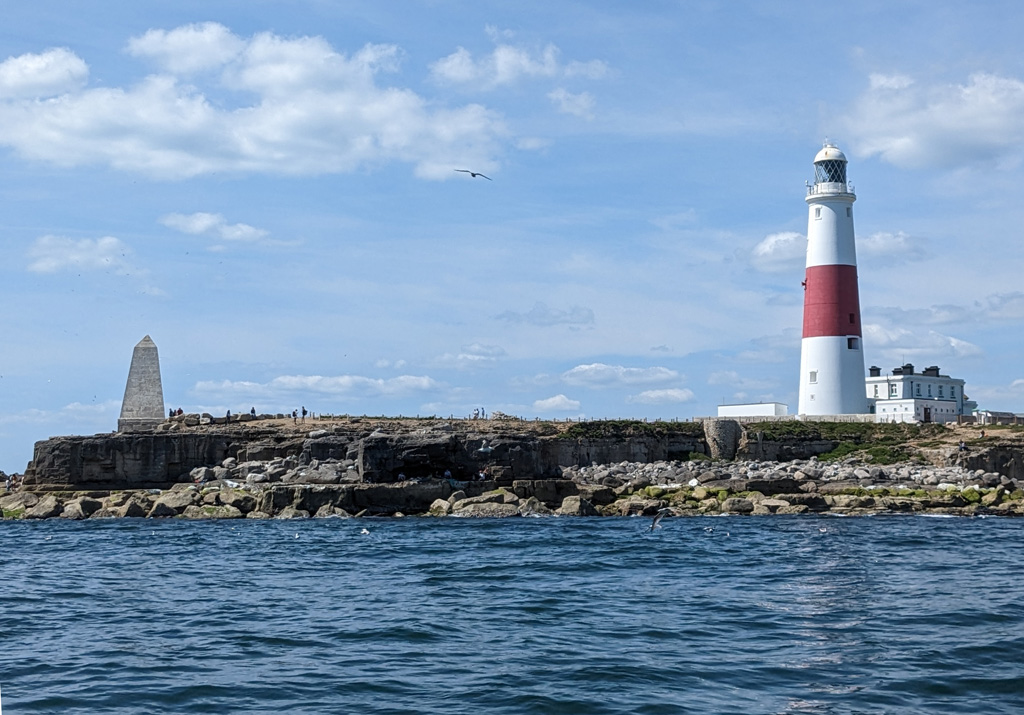
Passing Portland Bill in perfect diving weather
The shotline was dropped amidships and we planned to swim along the starboard hand rail (ship is lying on its port side slightly) towards the stern, but we landed on the port side and I thought it was the other side as there was wreck below the deck level.
Therefore, I turned left instead of right (or going up the wreck) and we headed to the bow.
Hitting a maximum of 44.6M (to Andy's disappointment we couldn't find a 50M scour), we passed over a look of deck planking and some machinery, but it was hard to really orientate ourselves on the wreck on this first visit.
We found ourselves on the seabed at the bow and descended into the scour here, vainly looking for a prop (as I still thought I was at the stern until now). The sharp bow standing up, though, made it clear where we were.
We swam around the bow and then did a short swim through here exiting again on the starboard side deck level.
Video from our Salsette dive
We returned to approximately the same spot as we'd descended to and then, at exactly 20 minutes as agreed, we started to ascend.
My new Sherewater Peregrine computer gave me stops at 12, 9 and 6M with 80% nitrox on the last two,
However, Andy's computer gave him stops only at 9 and 6, but for far longer, so we ended up doing far more deco than was strictly neccesary, including a 3 minute safety after Andy's deco was completed.
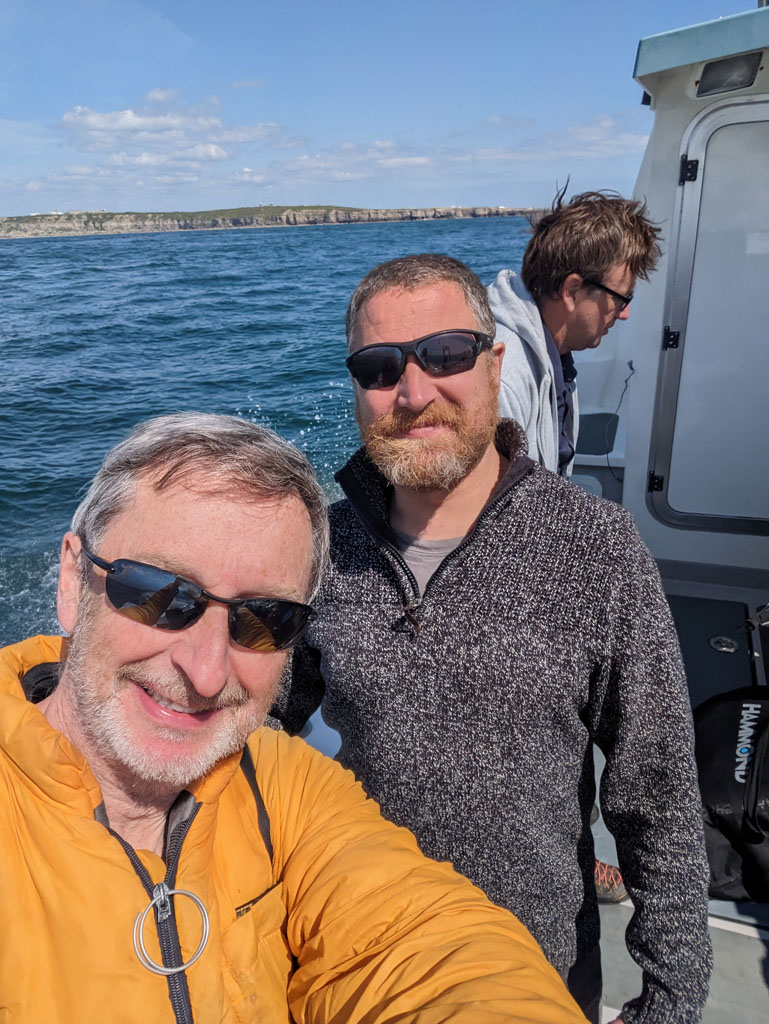
Two happy divers heading back.
It was a good dive, light and vis (c 5M) was reasonable at 40+M and we both agreed that this was a site we would try and return to fairly soon, to explore the wreck towards the bow.
A few days later we were at Wraysbury DC, clocking an epic 10M maximum, to give Saby, one of our less experienced divers, some refresher training, which was relaxed an enjoyable and definitely boosted his confidence in the water that had taken a bit of a knock during a Buoyancy and Trim course in Vobster the previous autumn.
Diving with NAS - Klein Hollandia and Norman's Bay Cannon trail
My next dives weren't with our club.
I had rejoined the Nautical Archaeological Society (NAS) after attending their free shipwreck conference earlier in the year, where my interest in older wrecks was rekindled.
I have dived many of their protected wrecks in the past, but when a chance to dive the Klein Hollandia came up, I booked myself a place.
The wreck is notable for the 8 bronze cannons still on the seabed after all these years.
It was an early start (rising at 4:30 and setting off at 5:00) to be loading at 7:15 and away soon after.
The weather remained warm and sunny, with little wind, as it had been for a few weeks at this point.
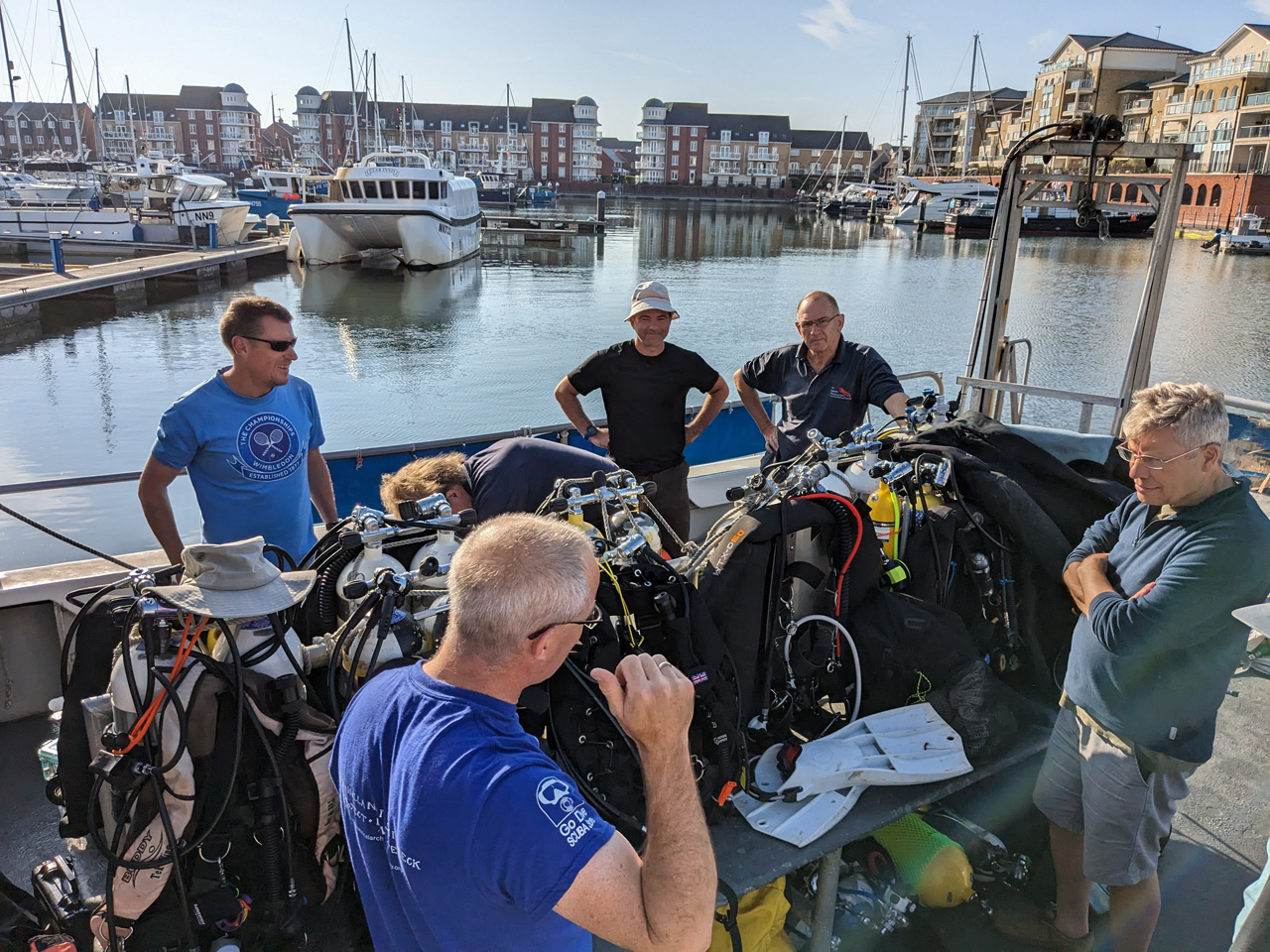
Mark from NAS gives us a briefing - My buddy, Nick, is top left in the sunglasses.
I was partnered with Nick, who was diving on a twinset with a stage for ADP deco, so I had a similar setup.
We dropped in amongst the last of the divers and found ourselves needing to swim to the site as the grappel was dragging along the seabed by this stage.
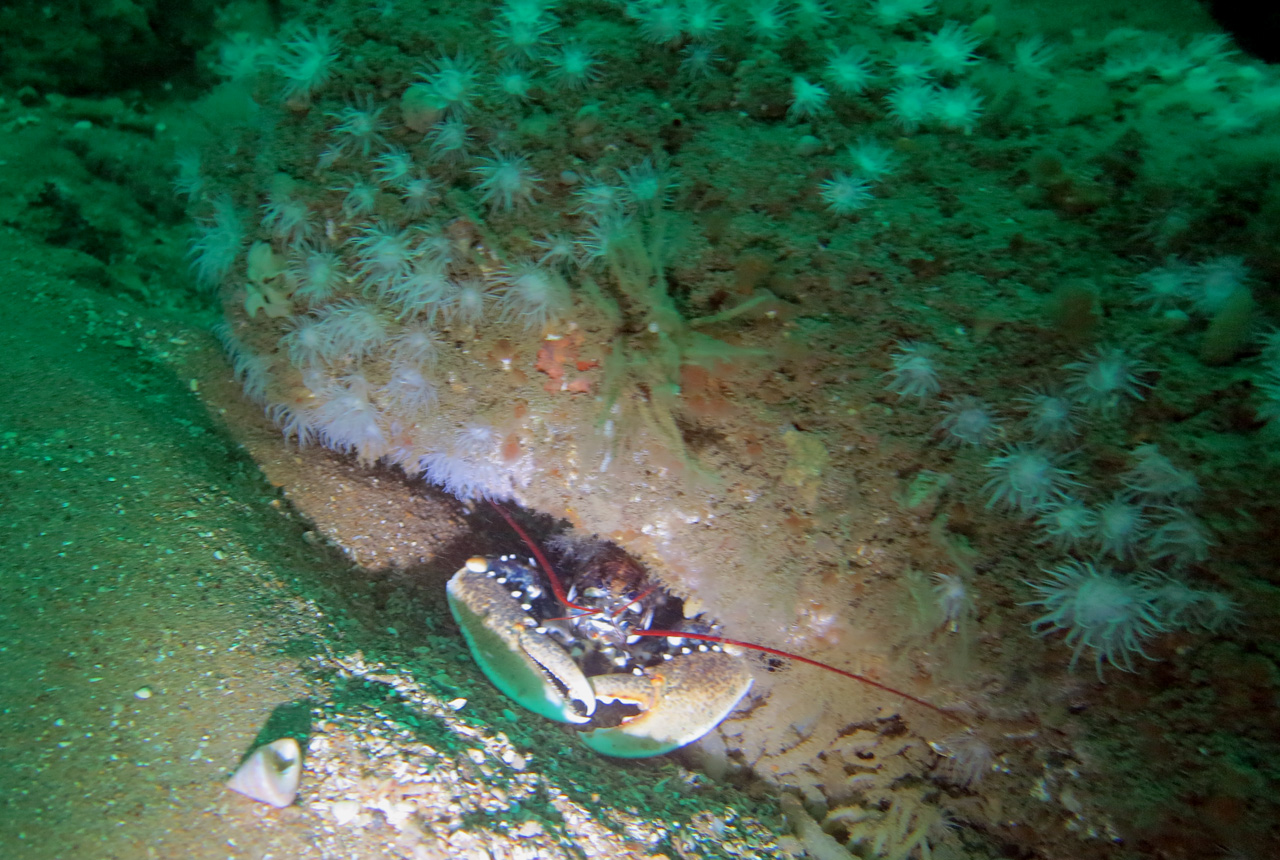
Lobster under a cannon, one of a number
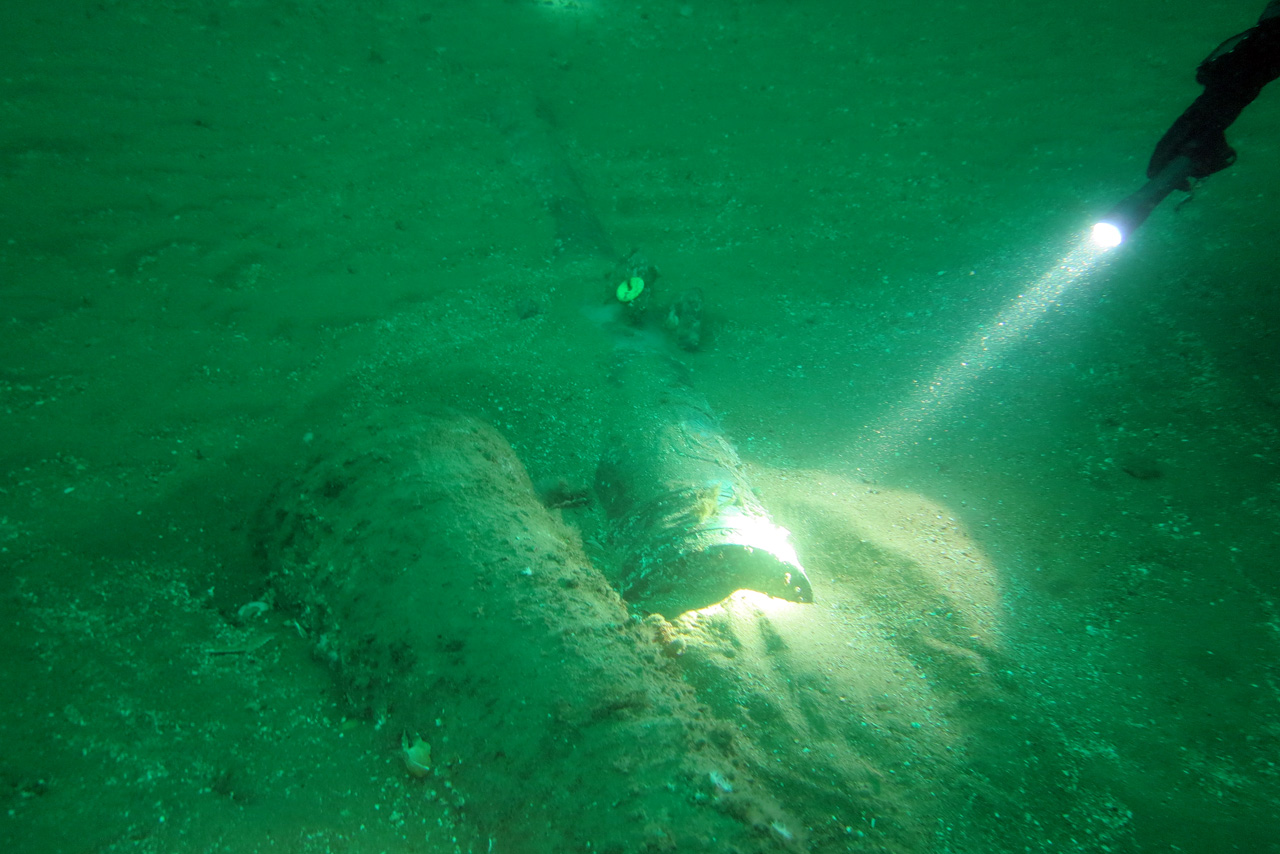
A couple of the bronze cannons
We found the first cannon after about 3 minutes of swimming. At first we struggled to orient ourselves on the wreck with so many cannons to choose from, even though we had a slate with a map of the site on.
After a few minutes of swimming around, though, we identified where we were by locating a number tag on one of the iron cannons and then we started to navigate around the site, managing over our time to find all the bronze cannons, including a small one resting below two bigger iron ones, and the tiles in the hold, plus the deck and hull timbers.
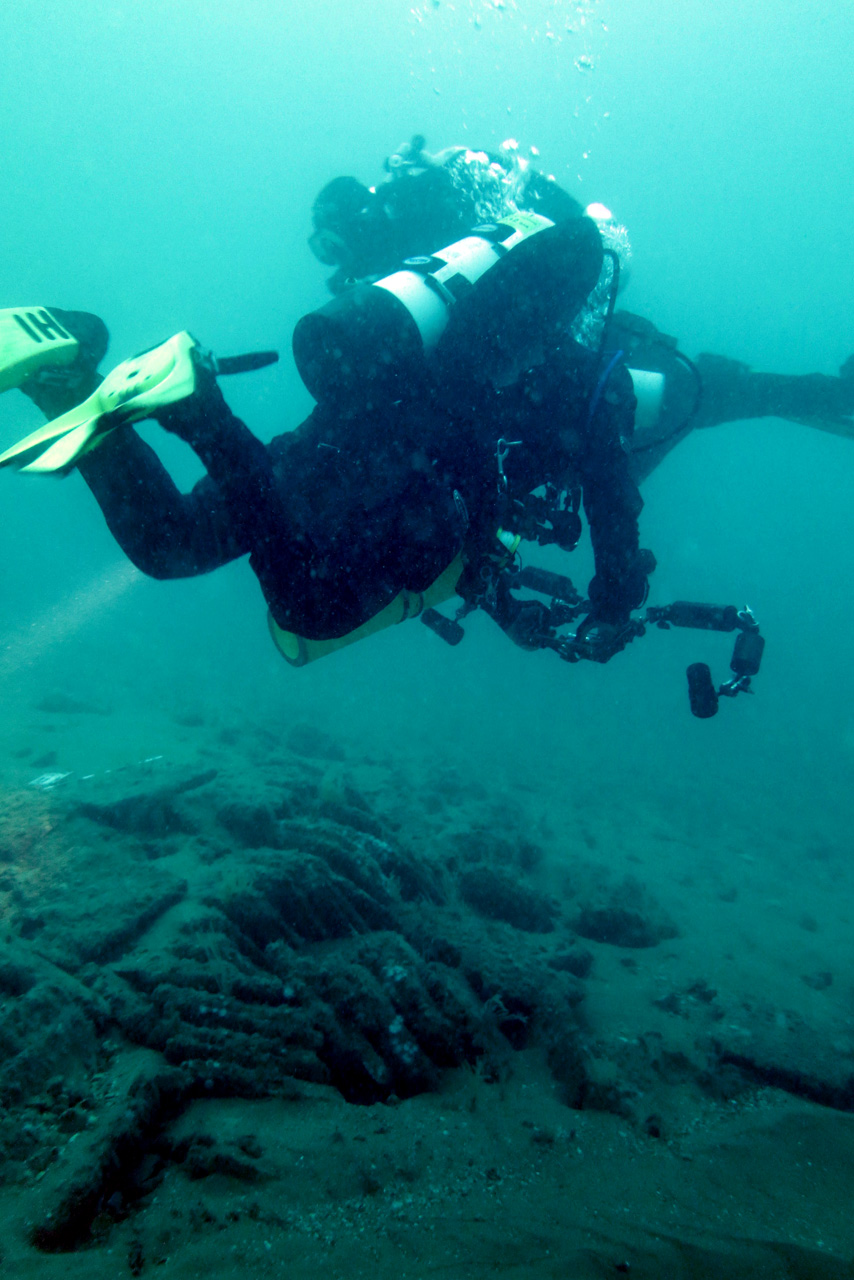
Two divers examine the tiles
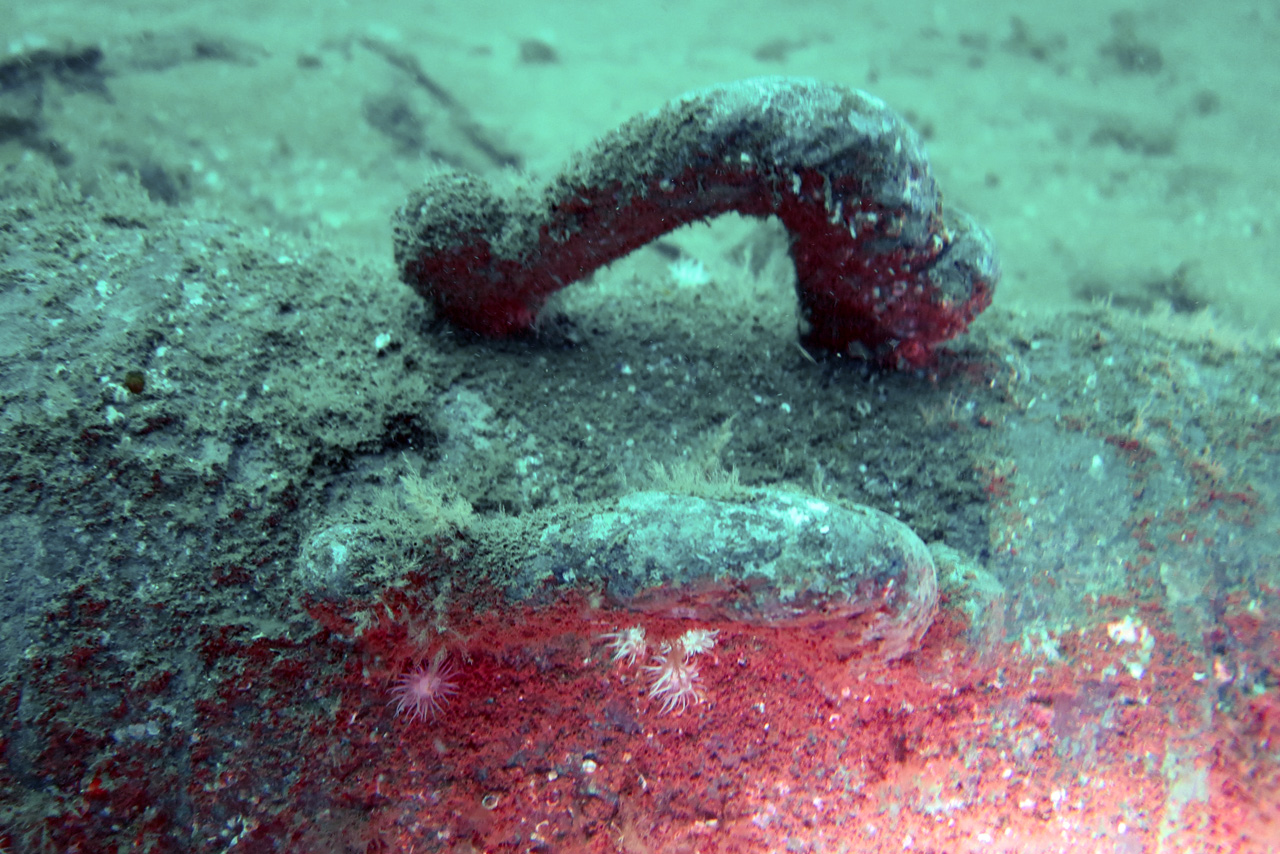
'Dolphins' on an iron cannon
The bronze cannons are in a remarkable state of preservation, green, but completely devoid of the concretion and corosion that iron cannons suffer, you could even make out the script and crests on them.
The vis was excellent (5+ metres), with plenty of light to navigate by and there was no noticable current during the dive.
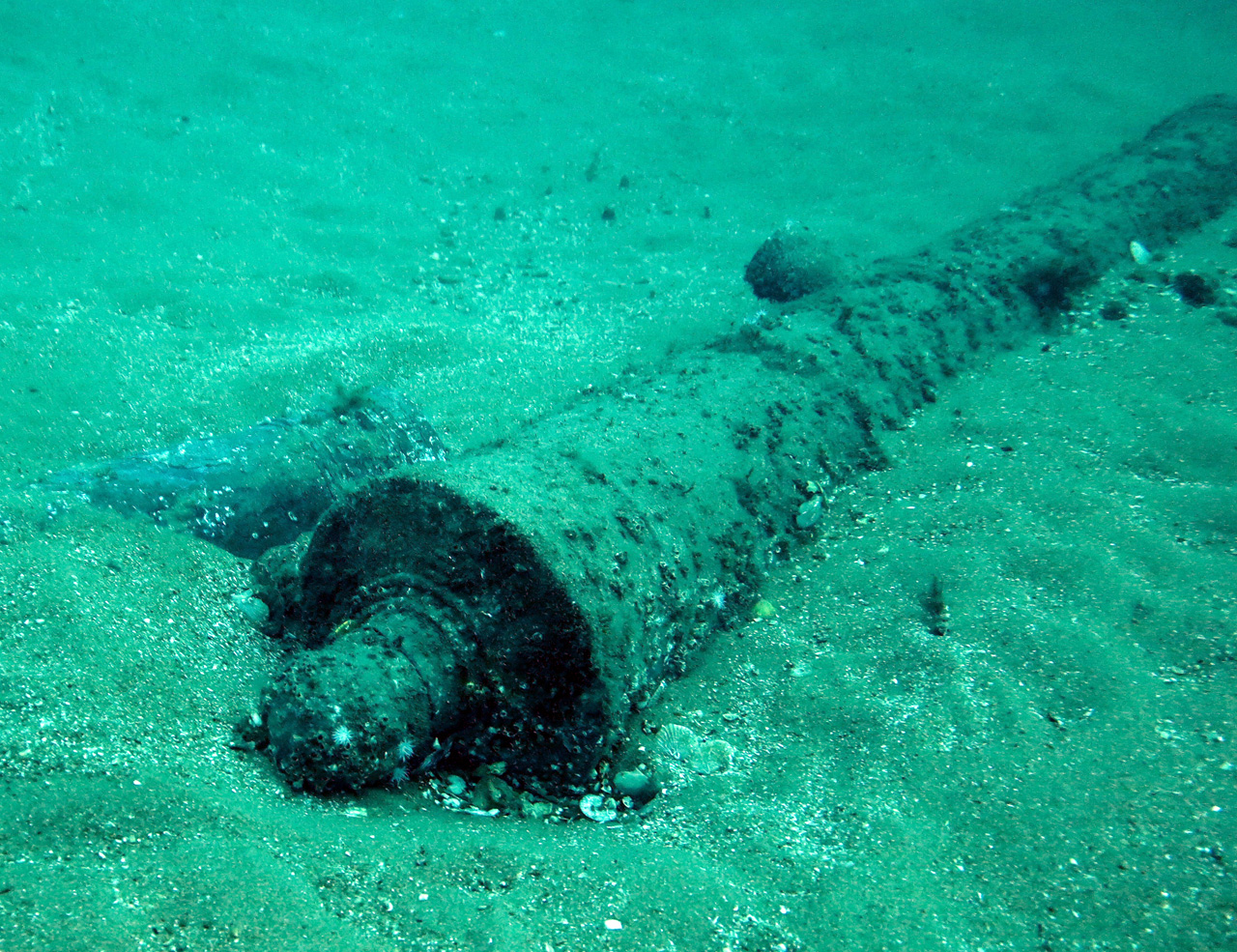
One of the larger brass cannons
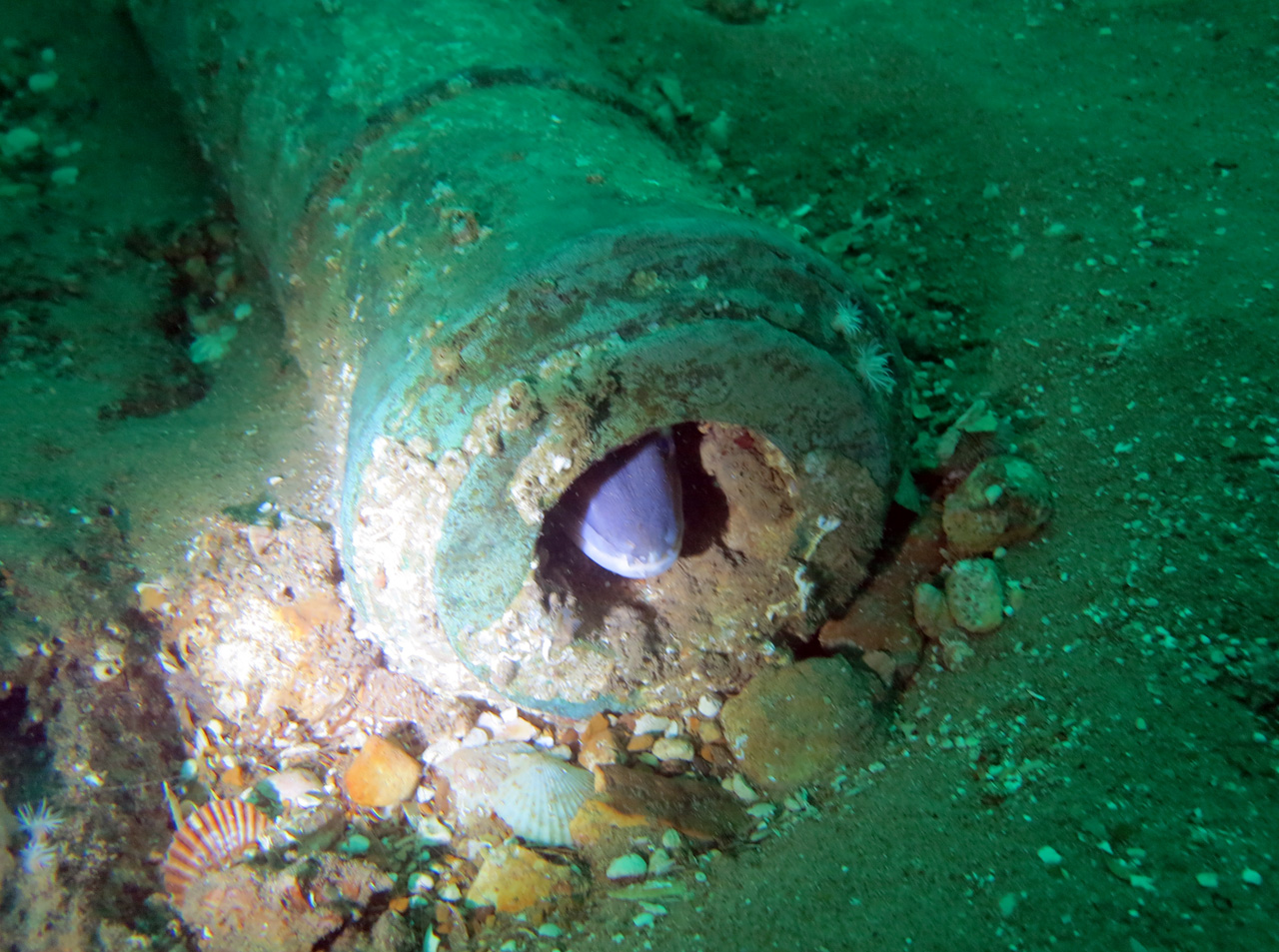
A conger lives in one of the brass cannons
We saw plenty of Congers, crabs and Lobsters on the wreck and a number of jellyfish on the ascent and deco stops.
Nick and I started to ascend around 27 minutes, but he took a while to get his DSMB launched, so we left at around 30 minutes, I incurred 2 minutes at 9M and 7 at 6M, but Nick had deeper stops (a less rich back gas and deco mix resulting in more deco) and we were separated by the time I switched gas at 9M.
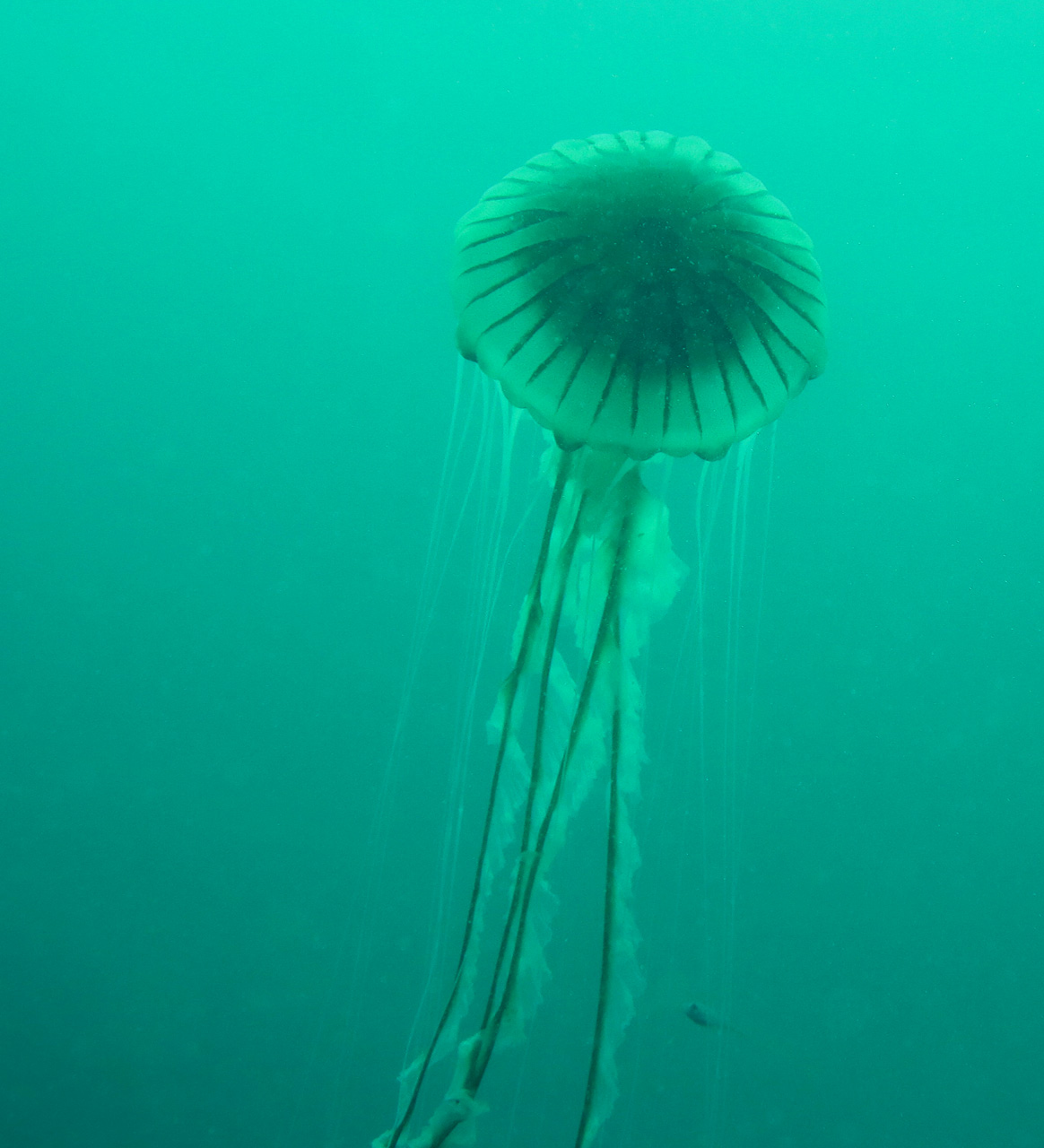
Large Jellyfish on the ascent
I was back on board for a while by the time he surfaced, but we'd agreed that this would probably be the case - I used a lot of gas from my twins, possibly due to a bit of stress switching gasses as I couldn't recall how my Sheerwater computer switched (it's not as simple as the HW I had).
Overall, a very enjoyable dive on a very historic wreck.
We had a very long (over 4 hours) surface interval before diving Norman's Bay, not really sure why as when we went in, it was immediately apparent that there was a considerable current running.
I dived this some years ago with Julian after doing the Holland V submarine, but this was a far more challenging dive, swimming into a strong current for most of the dive.
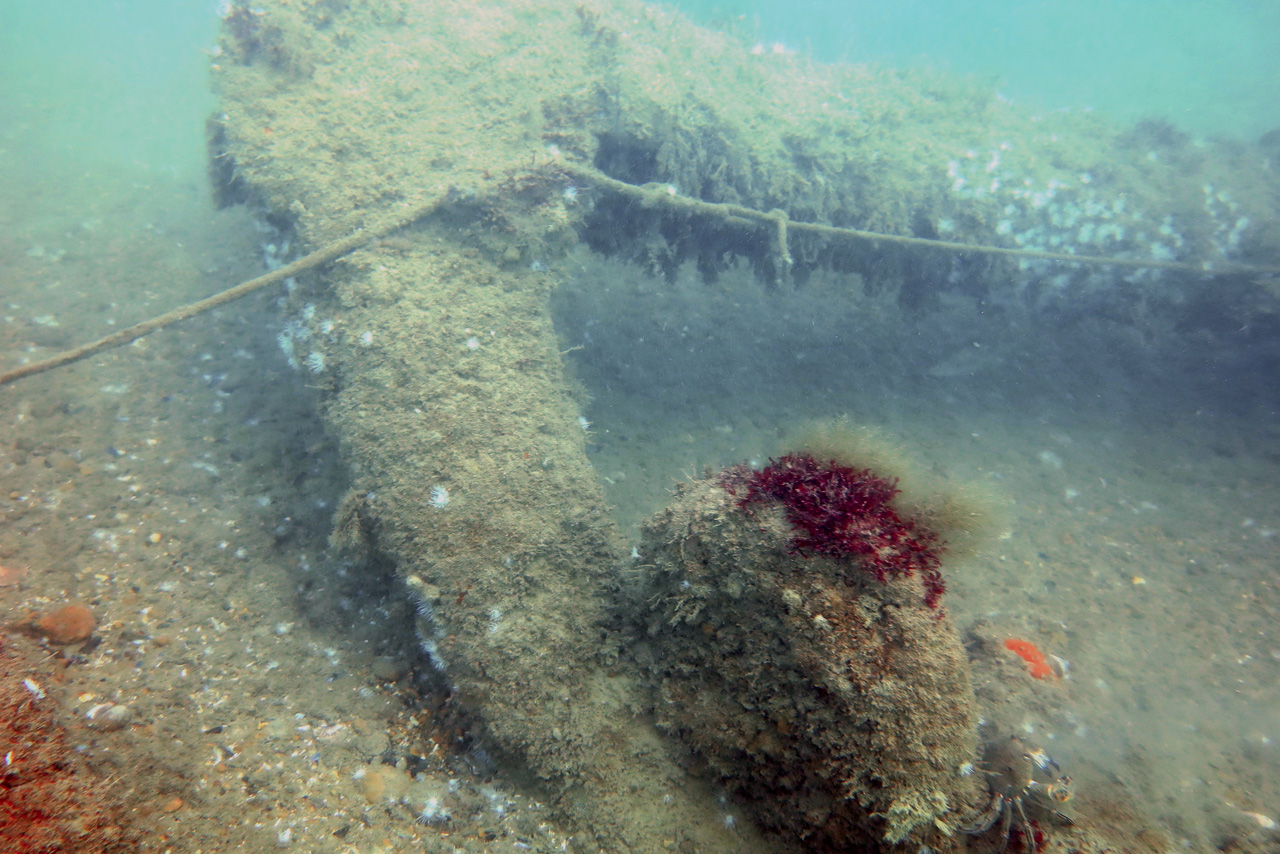
Anchor at Norman's Bay
On the plus side, the current was sweeping away any sediment, so the vis was excellent on this site, notorious for poor viz.
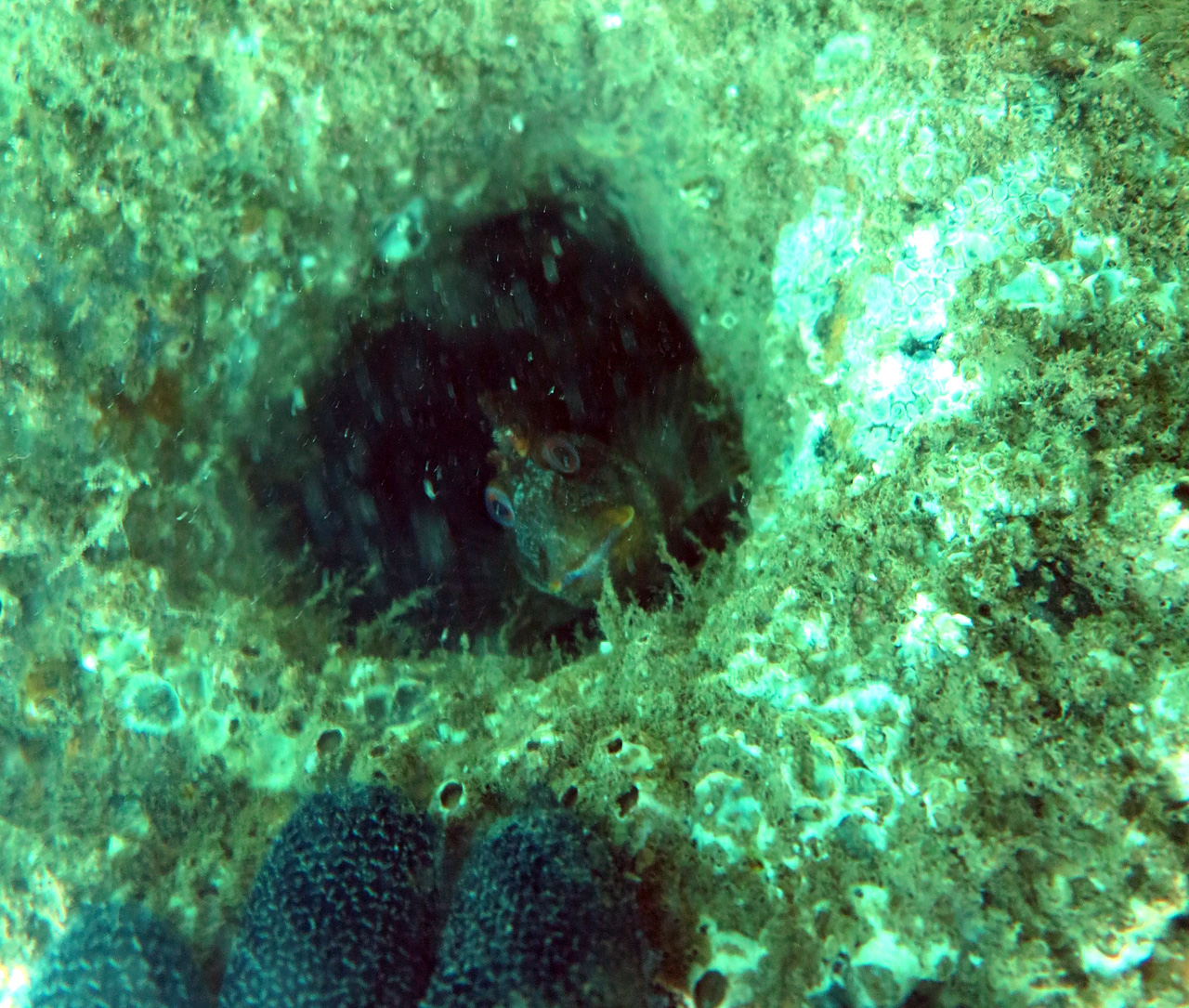
A Blennie inside a cannon
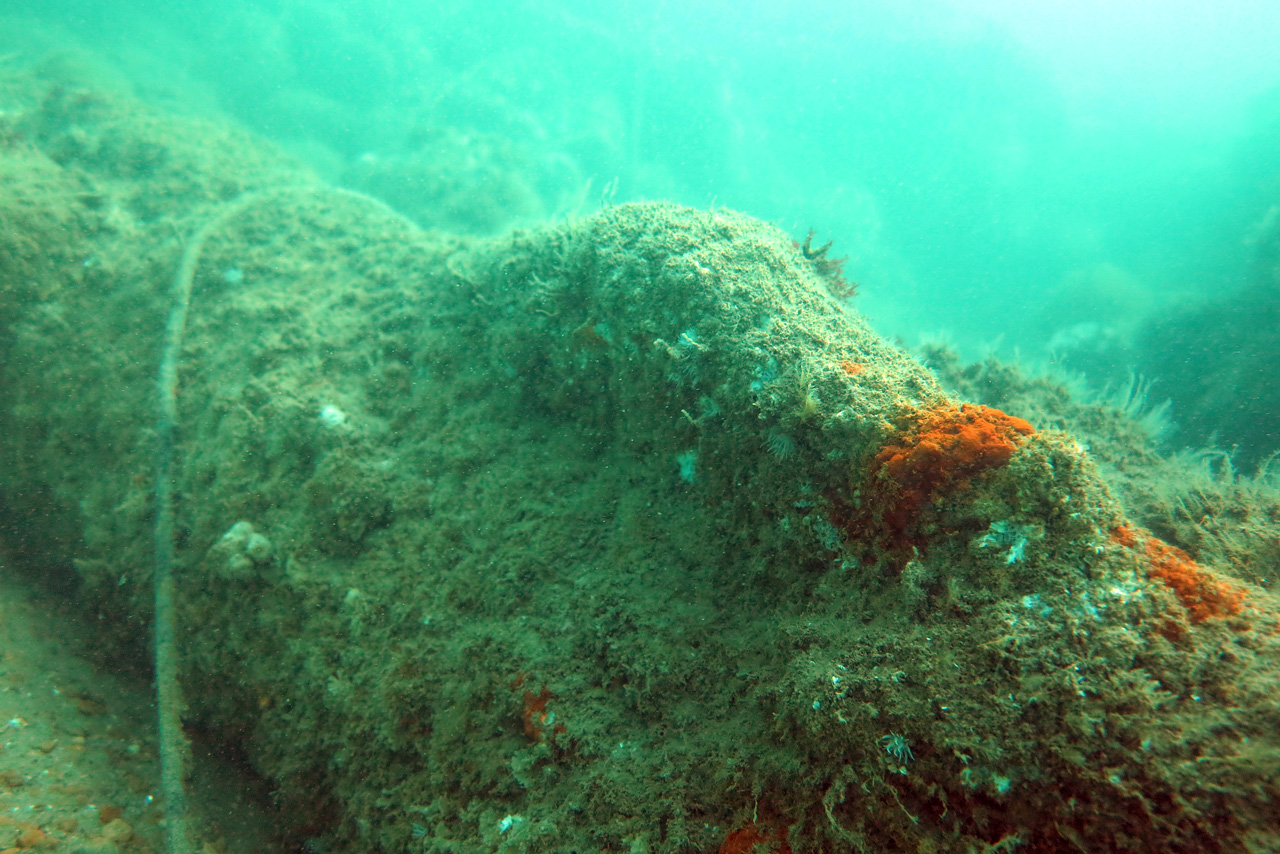
Dolphin on one of the cannons - They are all iron here.
Between us, we battled around the site and managed to cover it all, including one cannon well separated from the rest of the guns.
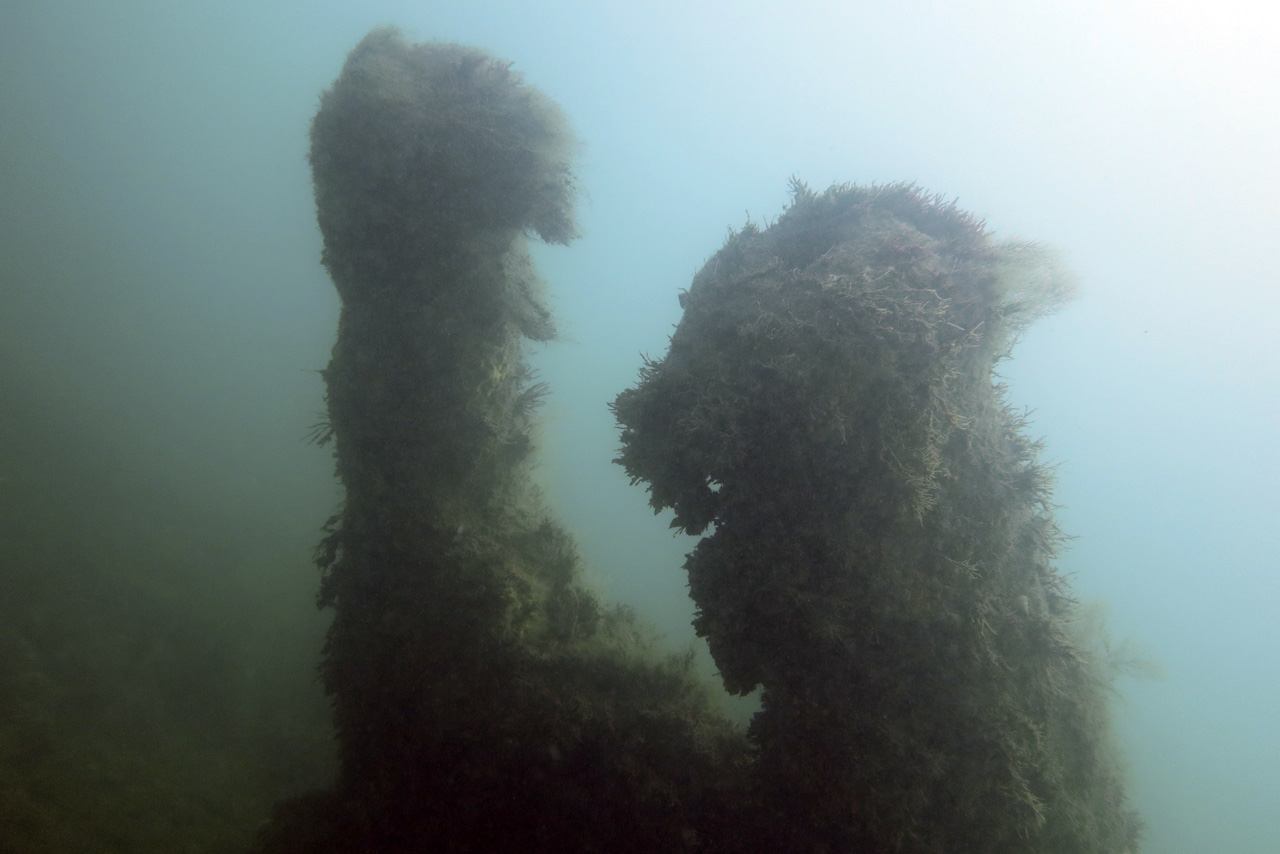
Two cannons elevated as if for firing at range, just where they fell.
However, it was very hard work to move around and stay in place and after around 30 minutes Nick indicated that he'd had enough, which I could sympathise with and he launched his DSMB.
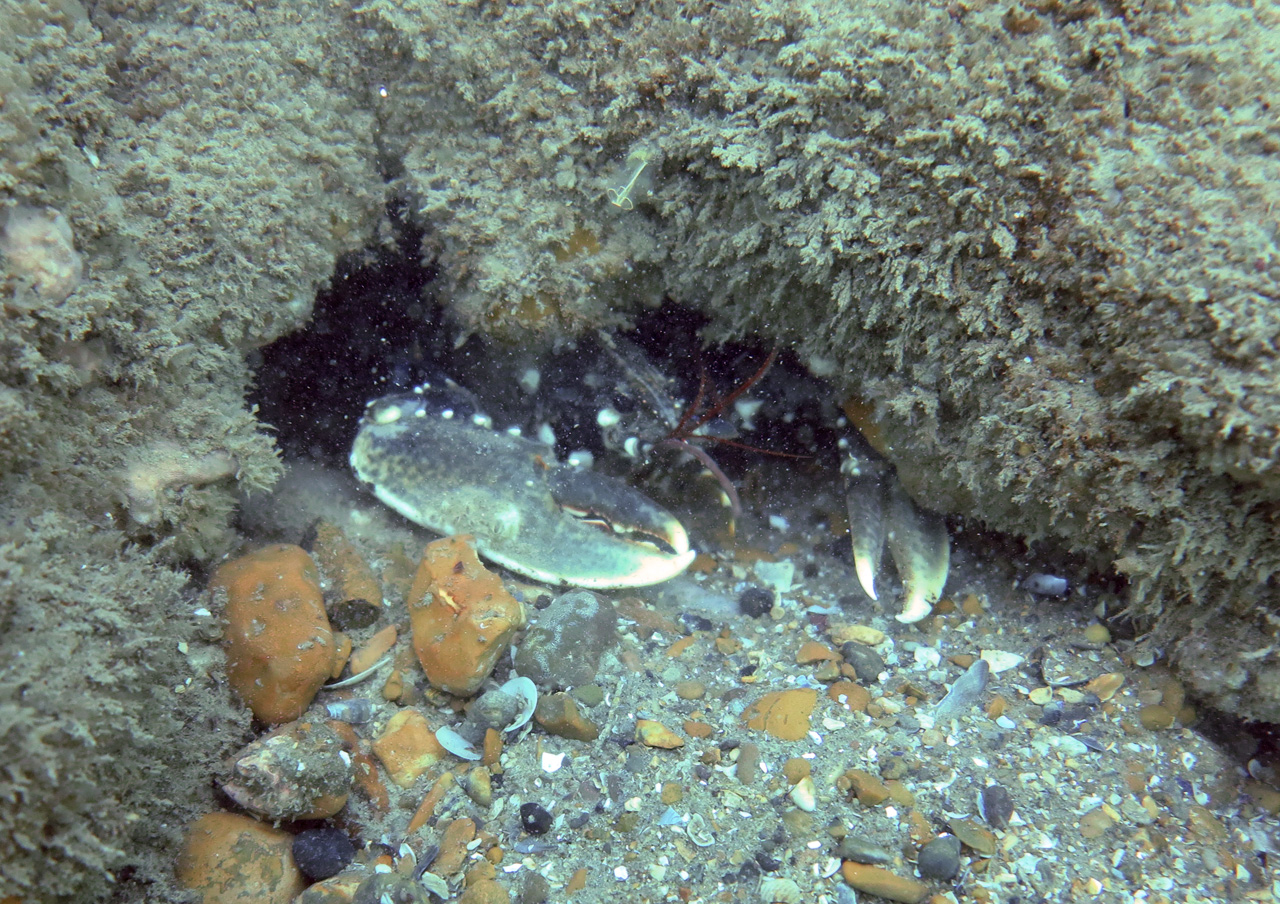
We were told there were no Lobsters here, but obviously one has moved in.
On this dive, I had a lot of trouble unclipping mine from the D-Ring on my wing and he was gone by the time I put mine up, so we surfaced separately, he was back on the boat and dekitted by the time they picked me up.
Generally, though it had been a very enjoyable day's diving, even if it ended up being a long one, not getting home until nearly 8PM.


